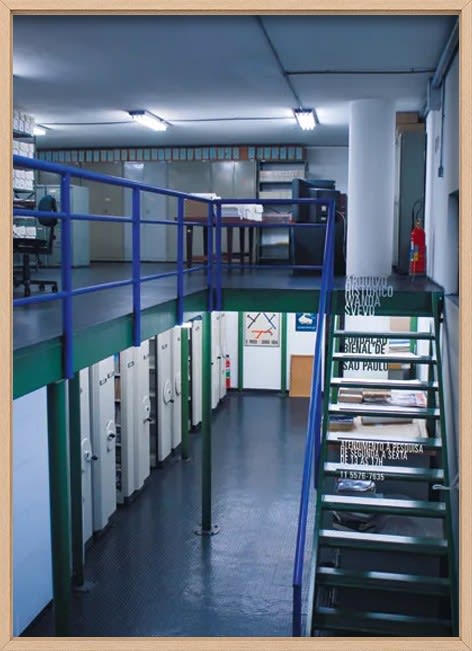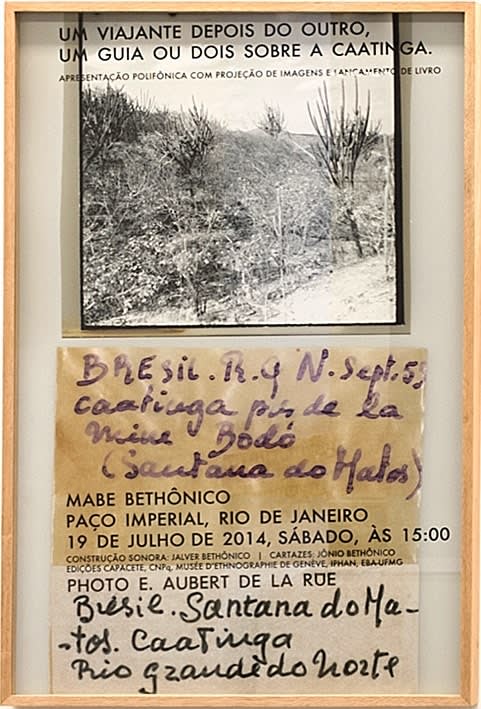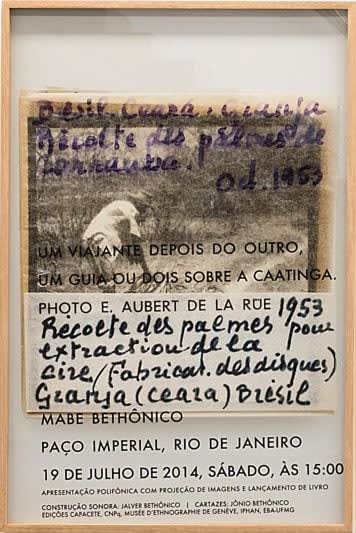Mabe Bethônico Lives and works in Arles (France) and Geneva (Switzerland), b. 1966
-
 Mabe BethônicoAulas de outro mundo, 202139,5 x 88 cm
Mabe BethônicoAulas de outro mundo, 202139,5 x 88 cm -
 Mabe BethônicoAulas de outro mundo, 202139,5 x 88 cm
Mabe BethônicoAulas de outro mundo, 202139,5 x 88 cm -
 Mabe BethônicoAulas de outro mundo, 202139,5 x 88 cm
Mabe BethônicoAulas de outro mundo, 202139,5 x 88 cm -
 Mabe BethônicoAulas de outro mundo, 202139,5 x 88 cm
Mabe BethônicoAulas de outro mundo, 202139,5 x 88 cm -
 Mabe BethônicoAulas de outro mundo, 202139,5 x 88 cm
Mabe BethônicoAulas de outro mundo, 202139,5 x 88 cm -
 Mabe BethônicoAulas de outro mundo, 202139,5 x 88 cm
Mabe BethônicoAulas de outro mundo, 202139,5 x 88 cm -
 Mabe BethônicoAulas de outro mundo, 202139,5 x 88 cm
Mabe BethônicoAulas de outro mundo, 202139,5 x 88 cm -
 Mabe BethônicoAulas de outro mundo, 202139,5 x 88 cm
Mabe BethônicoAulas de outro mundo, 202139,5 x 88 cm -
 Mabe BethônicoEm torno de Mil Peças, 2016Quebra cabeçaAproximadamente 110 x 190 cm
Mabe BethônicoEm torno de Mil Peças, 2016Quebra cabeçaAproximadamente 110 x 190 cm -
 Mabe BethônicoUm viajante depois do outro na Galeria Celma Albuquerque, 2014Impressão digital em Epson Enhanced Matt Paper99 x 66 cm
Mabe BethônicoUm viajante depois do outro na Galeria Celma Albuquerque, 2014Impressão digital em Epson Enhanced Matt Paper99 x 66 cm -
 Mabe BethônicoLivro de mim, 2002Fac-simile, impressão jato de tinta em papel Epson Enhanced Matt Paper, ataduras com papel e aplicação de Letraset17,5 x 61 (com moldura)
Mabe BethônicoLivro de mim, 2002Fac-simile, impressão jato de tinta em papel Epson Enhanced Matt Paper, ataduras com papel e aplicação de Letraset17,5 x 61 (com moldura)
23 x 27,5 x 7,5 cm -
 Mabe BethônicoSem título - Série: Campanha Vanda Svevo, 27o Bienal de São PauloImpressão digital com pigmento mineral à base de água sobre papel90 x 63 cm
Mabe BethônicoSem título - Série: Campanha Vanda Svevo, 27o Bienal de São PauloImpressão digital com pigmento mineral à base de água sobre papel90 x 63 cm -
 Mabe BethônicoSem título - Série: Campanha Vanda Svevo, 27o Bienal de São PauloImpressão digital com pigmento mineral à base de água sobre papel90 x 63 cm
Mabe BethônicoSem título - Série: Campanha Vanda Svevo, 27o Bienal de São PauloImpressão digital com pigmento mineral à base de água sobre papel90 x 63 cm -
 Mabe BethônicoSem título - Série: Campanha Vanda Svevo, 27o Bienal de São PauloImpressão digital com pigmento mineral à base de água sobre papel90 x 63 cm
Mabe BethônicoSem título - Série: Campanha Vanda Svevo, 27o Bienal de São PauloImpressão digital com pigmento mineral à base de água sobre papel90 x 63 cm -
 Mabe BethônicoSem título - Série: Campanha Vanda Svevo, 27o Bienal de São PauloImpressão digital com pigmento mineral à base de água sobre papel90 x 63 cm
Mabe BethônicoSem título - Série: Campanha Vanda Svevo, 27o Bienal de São PauloImpressão digital com pigmento mineral à base de água sobre papel90 x 63 cm -
 Mabe BethônicoUm viajante depois do outro IImpressão digital em Epson Enhanced Matt Paper99 x 66 cm
Mabe BethônicoUm viajante depois do outro IImpressão digital em Epson Enhanced Matt Paper99 x 66 cm -
 Mabe BethônicoUm viajante depois do outro IIImpressão digital em Epson Enhanced Matt Paper99 x 66 cm
Mabe BethônicoUm viajante depois do outro IIImpressão digital em Epson Enhanced Matt Paper99 x 66 cm -
 Mabe BethônicoUm viajante depois do outro IIIImpressão digital em Epson Enhanced Matt Paper99 x 66 cm
Mabe BethônicoUm viajante depois do outro IIIImpressão digital em Epson Enhanced Matt Paper99 x 66 cm -
 Mabe BethônicoUm viajante depois do outro VImpressão digital em Epson Enhanced Matt Paper99 x 66 cm
Mabe BethônicoUm viajante depois do outro VImpressão digital em Epson Enhanced Matt Paper99 x 66 cm
Mabe Bethônico, 1966, Belo Horizonte, MG, Brazil.
Lives and works in Arles, France, and Geneva, Switzerland.
Mabe Bethônico is an artist researcher currently teaching at HEAD – Genève. Between 2002 and 2020 she has been professor of the Federal University of Minas Gerais, Brazil. She was guest researcher at ESAAA – École Supérieure d’Art Annecy Alps, France within the project “Effondrement des Alpes”, financed by the European Union in a French-Swiss partnership [2018 - 2021].
She participated in the 27th and 28th São Paulo Biennials and has shown at the Museum of Modern Art in São Paulo, the Antioquia Museum in Medellín, at the Kunstverein Munich, Centre Georges Pompidou in Paris, Musée d’Art Moderne de Lyon, Malba in Buenos Aires, amongst others. In 2021 she participated in the 17th Architecture Biennial in Venice with a project derived from her research on the topic of mineral extraction.
Along with the international group of artists and theoreticians World of Matter, initiated in 2010, her researches focused on issues of climate change and resource economies. One of the main references in her works is the history of mining in Minas Gerais. The projects narrate the cultural, economic and political transformations caused by extractive activities, using archives and field documentation, focusing on environmental destruction and workers’ life around the mines. She has dealt with contents from collections such as the Eisenbibliothek in Schlatt and the Museum of Ethnography in Geneva, the Imperial College in London and with materials from Brazilian archives, such as photographs from the Mining sector of the Ministry of Labor and Employment. The works are often followed by performed conferences using image projection, rearticulating historical facts and narrating the processes of research themselves.





















